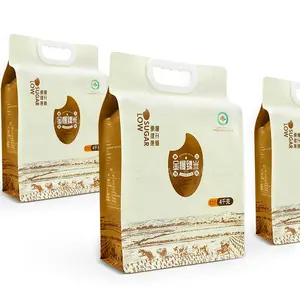Rice Sack Bag: An Overview
Rice sack bags are a staple in the packaging industry, serving as a reliable means for the containment and transportation of rice. These bags are crafted to accommodate various weights, with options like 1 sack of rice or half sack of rice, catering to different market needs. The versatility of rice sack bags extends beyond just rice; they are also utilized for a myriad of products such as spices, pharmaceuticals, and other food items.
Types and Features
The diversity of rice sack bags is evident in their types and features. From the traditional rice in sack that is synonymous with bulk rice storage to specialized jasmine rice sack options that cater to specific rice varieties, the range is extensive. Features such as resealability are incorporated to preserve freshness and prevent contamination. While not entirely airtight, these bags are designed to minimize air exposure, thereby extending the shelf life of their contents.
Materials and Sustainability
Material choice for rice sack bags has evolved with a growing environmental consciousness. The shift towards materials that degrade more readily is noticeable, with options that produce fewer toxic chemicals and contribute less to landfill mass. This move aligns with the global initiative to reduce the environmental footprint of packaging. Reusable bags have gained traction, offering a sustainable alternative to single-use bags and reducing the need for frequent purchases.
Design and Customization
Customization plays a pivotal role in the appeal of rice sack bags. The ability to have a sack of rice drawing or a custom motto inscribed elevates the functionality of the bag to a marketing tool. This strategy enhances brand visibility and fosters customer loyalty, as personalized messages can resonate with consumers and augment their shopping experience.
Applications and Advantages
The application of rice sack bags is not limited to the storage of rice plastic bag varieties. Their robust design makes them suitable for a range of uses, from small-scale kitchen storage to large-scale distribution. The advantages of using these bags are manifold, including the protection against spoilage, ease of transport, and the potential for brand reinforcement through customized design.
Conclusion
In conclusion, rice sack bags are an integral component of the packaging sector, with their utility extending across various industries. The evolution of these bags towards more sustainable materials and the option for customization has solidified their position in the market. As a result, they continue to be a preferred choice for businesses looking to efficiently package, transport, and market their goods.








































 浙公网安备 33010002000092号
浙公网安备 33010002000092号 浙B2-20120091-4
浙B2-20120091-4